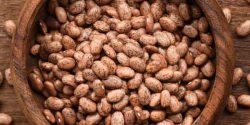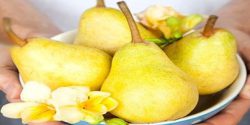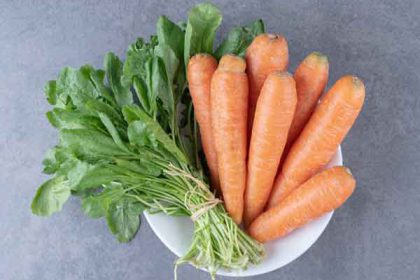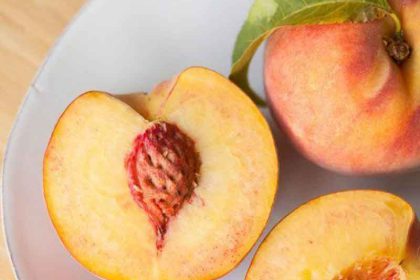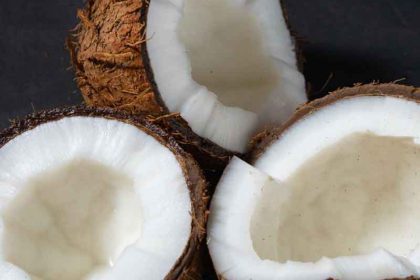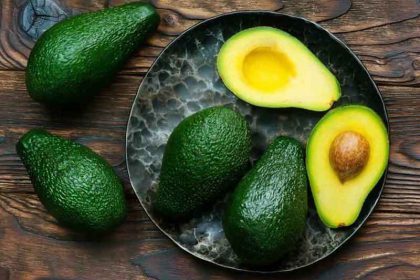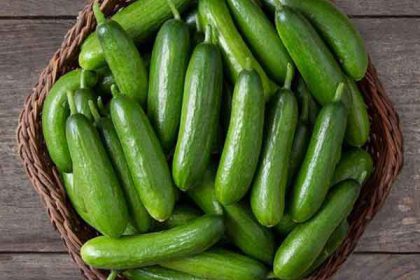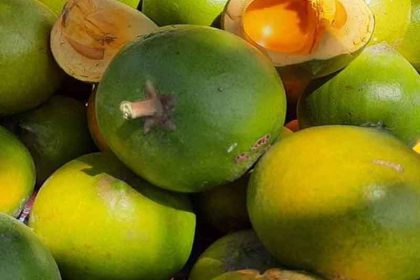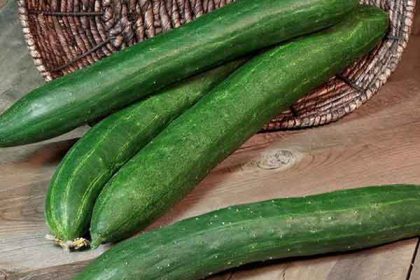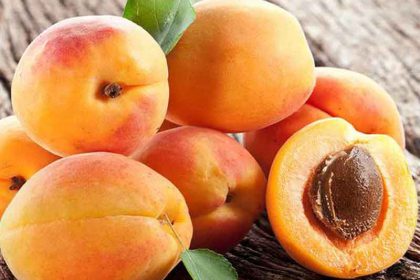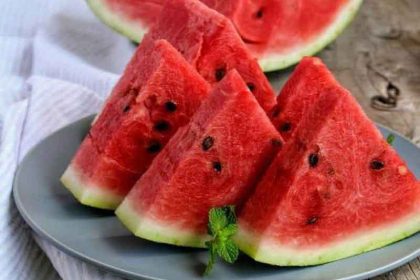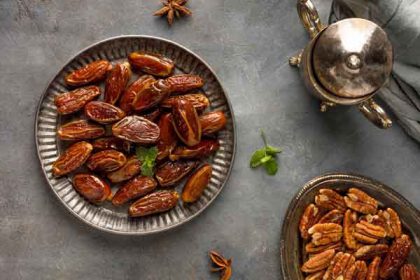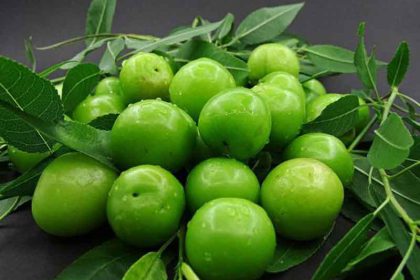Mint benefits for females and males and skin
Mint
Mint benefits for females and males and skin on Nicholi site. We hope this article will be of interest to you.
Mint is a versatile herb with various culinary, medicinal, and aromatic uses. It is commonly used for its refreshing flavor and aroma in both sweet and savory dishes. Mint offers several benefits, including aiding digestion, freshening breath, promoting respiratory health, soothing the skin, providing stress relief, and offering antioxidant and anti-inflammatory properties. Drinking mint water in the morning can improve digestion, freshen breath, hydrate the body, promote calmness, enhance alertness, and provide antioxidants. Mint leaves have specific benefits such as improving digestive health, relieving respiratory issues, promoting oral health, benefiting the skin, enhancing mental alertness, reducing stress, supporting weight management, and offering antioxidant and anti-inflammatory properties. However, some individuals may experience side effects such as heartburn, allergic reactions, gastrointestinal issues, interactions with medications, or lowered blood sugar levels when consuming mint leaves. Mint also has medicinal uses, including aiding digestion, alleviating nausea and motion sickness, and providing headache relief.
Mint benefits
Mint is a versatile herb with various uses and benefits. Here are some of its common uses and associated benefits:
Culinary Uses: Mint is widely used in culinary preparations due to its refreshing flavor and aroma. It is used in both sweet and savory dishes, including salads, soups, sauces, desserts, and beverages like mint tea. Mint leaves add a burst of flavor and can enhance the taste of many dishes.
Digestive Aid: Mint has been traditionally used to support digestion. It can help stimulate the production of digestive enzymes, relieve indigestion, reduce bloating and gas, and soothe stomach cramps. Consuming mint tea or incorporating mint leaves into meals can assist in maintaining a healthy digestive system.
Breath Freshener: Mint is commonly used as a natural breath freshener. Chewing mint leaves or using mint-infused mouthwash can help mask bad breath and provide a pleasant and cooling sensation in the mouth. It also possesses antibacterial properties that can help combat oral bacteria that cause odor.
Respiratory Health: The menthol content in mint leaves provides a cooling effect and acts as a natural decongestant. Inhaling the aroma of mint leaves or using mint-based products like inhalers, balms, or steam inhalation can help clear the respiratory tract, alleviate congestion, and ease respiratory discomfort.
Skin Care: Mint leaves offer benefits for the skin. They have soothing and cooling properties that can help relieve skin irritations, itching, and inflammation. Applying crushed mint leaves or mint-infused products can provide relief from insect bites, rashes, sunburns, and certain skin conditions like acne.
Stress Relief: The aroma of mint has a calming effect on the mind and body. Inhaling the scent of mint leaves or using mint essential oil in aromatherapy can help reduce stress, anxiety, and mental fatigue. It can promote relaxation, uplift the mood, and provide a sense of freshness.
Antioxidant and Anti-inflammatory Properties: Mint leaves contain antioxidants and phytonutrients that help protect the body against oxidative stress and inflammation. These properties can contribute to overall health and may have a potential role in preventing chronic diseases.
Insect Repellent: Mint has a strong scent that repels insects. Growing mint plants or using mint leaves in essential oil form can help deter insects like mosquitoes, ants, and flies. Rubbing crushed mint leaves on the skin may also act as a natural insect repellent.
Benefits of drinking mint water in the morning
Drinking mint water in the morning can provide several potential benefits for your health and well-being. Here are some of the benefits associated with consuming mint water:
Improved digestion: Mint has been traditionally used to aid digestion. Drinking mint water can help stimulate the production of digestive enzymes, soothe the stomach, and alleviate digestive discomforts, such as bloating, indigestion, and gas.
Freshens breath: Mint has natural antibacterial properties that can help fight bad breath. Drinking mint water in the morning can leave you with a refreshed and pleasant breath.
Hydration: Starting your day with a glass of mint water can contribute to your daily hydration needs. Staying hydrated is essential for maintaining overall health, as it helps regulate body temperature, supports organ function, and aids in digestion.
Calming and stress relief: The aroma of mint has a calming effect on the mind and can help alleviate stress and anxiety. Sipping on mint water in the morning may help you feel more relaxed and focused throughout the day.
Improved alertness: Mint has invigorating properties that can help boost alertness and improve cognitive function. Drinking mint water in the morning may provide a refreshing and energizing start to your day.
Antioxidant properties: Mint contains antioxidants, such as Rosmarinic acid, that help protect the body against oxidative stress caused by free radicals. Antioxidants are important for maintaining overall health and may contribute to reducing the risk of chronic diseases.
Support for respiratory health: The menthol compound found in mint has been associated with decongestant properties. Drinking mint water can help soothe nasal passages and relieve symptoms of respiratory conditions, such as congestion and cough.
Benefits of mint leaves
Mint leaves offer a range of benefits due to their unique combination of active compounds and essential oils. Here are some key benefits of mint leaves:
Digestive Health: Mint leaves have been traditionally used to improve digestion. They can help stimulate the production of digestive enzymes, relieve indigestion, reduce bloating and gas, and ease stomach cramps.
Respiratory Relief: The menthol content in mint leaves provides a cooling sensation and acts as a natural decongestant. It can help clear the respiratory tract, alleviate congestion, soothe coughs, and provide relief from sinusitis and respiratory allergies.
Oral Health: Mint leaves are commonly used in oral hygiene products due to their antibacterial properties. Chewing mint leaves or using mint-infused mouthwash can freshen breath, kill bacteria in the mouth, and help prevent tooth decay and gum disease.
Skin Care: The cooling and soothing properties of mint leaves make them beneficial for the skin. They can help relieve itching, inflammation, and skin irritations caused by conditions like acne, insect bites, or eczema. Mint leaves are also used in skin care products for their refreshing and toning effects.
Mental Alertness: The aroma of mint leaves has been found to enhance mental alertness and cognitive performance. Inhaling the scent of mint leaves or using mint essential oil in aromatherapy can help improve focus, memory, and overall cognitive function.
Stress Relief: Mint leaves have calming properties that can help reduce stress and anxiety. The aroma of mint leaves can have a relaxing effect on the mind and promote a sense of calmness and well-being.
Weight Management: Mint leaves are low in calories and can be a healthy addition to a weight management diet. They can help stimulate the digestion of fats, regulate appetite, and provide a refreshing alternative to high-calorie snacks.
Antioxidant and Anti-inflammatory Properties: Mint leaves contain various antioxidants and phytonutrients that help protect the body against oxidative stress and inflammation. These compounds can contribute to overall health and may have a protective effect against chronic diseases.
Side effects of mint leaves
While mint leaves are generally safe for consumption and offer numerous health benefits, some individuals may experience certain side effects or allergic reactions. A few potential side effects of consuming mint leaves:
Heartburn or acid reflux: Mint can relax the lower esophageal sphincter, which can lead to the reflux of stomach acid into the esophagus. This can cause symptoms like heartburn or worsen existing acid reflux conditions in susceptible individuals.
Allergic reactions: Mint belongs to the same family as other herbs like basil and oregano. Some people may have allergic reactions to mint, experiencing symptoms such as itching, skin rash, hives, or difficulty breathing. If you have a known allergy to mint or similar herbs, it’s best to avoid consuming it.
Gastrointestinal issues: While mint is often used to aid digestion, some individuals may experience gastrointestinal issues such as stomach cramps, diarrhea, or nausea after consuming mint leaves or products with a high concentration of mint.
Interaction with certain medications: Mint may interact with certain medications, such as antacids, medications for high blood pressure, and certain antibiotics. If you are taking any medications, it’s important to consult with your healthcare provider to ensure there are no potential interactions.
Lowered blood sugar levels: Mint has been suggested to have blood sugar-lowering effects. While this can be beneficial for individuals with diabetes or pre-diabetic conditions, it may cause blood sugar levels to drop too low in some cases. People with diabetes should monitor their blood sugar levels closely when consuming mint in large quantities.
Mint medicinal uses
Mint, scientifically known as Mentha, is a versatile herb widely used for culinary, medicinal, and aromatic purposes. It belongs to the Lamiaceae family and is known for its refreshing fragrance and cooling sensation. Some medicinal uses of mint:
Digestive Aid: Mint has carminative properties that can help soothe digestive issues such as indigestion, bloating, and gas. It can also stimulate the production of digestive enzymes, aiding in the digestion process.
Nausea and Motion Sickness: Mint has a calming effect on the stomach and can help alleviate symptoms of nausea, including morning sickness during pregnancy or motion sickness during travel.
Headache Relief: The cooling properties of mint can provide relief from headaches and migraines. Applying mint essential oil or a crushed mint leaf paste to the temples or forehead may help ease the discomfort.
Respiratory Health: Mint contains menthol, which can help relieve respiratory congestion and soothe irritated airways. It is commonly used in cough drops, inhalers, and chest rubs to alleviate symptoms of cold, cough, and sinus congestion.
Oral Health: Mint’s antibacterial properties make it beneficial for oral health. It can freshen your breath, reduce bacteria in the mouth, and alleviate symptoms of gum disease or oral infections. Many toothpaste, mouthwash, and chewing gum products contain mint.
Skin Care: Mint has a cooling and soothing effect on the skin. It can help alleviate itching, irritation, and inflammation associated with conditions like eczema, insect bites, or poison ivy. Mint-based products are also used in skin care for their refreshing properties.
Menstrual Cramp Relief: Mint has antispasmodic properties that can help relax muscles and relieve menstrual cramps. Drinking mint tea or using mint essential oil in a massage oil may provide relief during menstruation.
Stress and Anxiety: The aroma of mint has a calming and relaxing effect on the mind. Inhaling mint essential oil or using it in aromatherapy can help reduce stress, and anxiety, and promote relaxation.
Side effects of mint leaves on females
Mint leaves are generally safe for consumption and have been used for culinary and medicinal purposes for centuries. However, in some cases, mint leaves may have certain effects on females. Here are a few potential considerations:
Hormonal Effects: There is limited evidence suggesting that high doses of mint or mint extracts may have potential anti-androgenic effects, meaning they could reduce the levels of male hormones like testosterone. This can potentially interfere with hormonal balance in women. However, these effects are mostly observed with concentrated extracts or high doses of mint, and the consumption of moderate amounts of fresh mint leaves in culinary use is unlikely to cause significant hormonal imbalances.
Menstrual Cycle: Some anecdotal reports suggest that consuming large amounts of mint tea or using concentrated mint products could potentially affect the menstrual cycle. However, scientific evidence supporting these claims is lacking, and the impact of moderate consumption of fresh mint leaves on the menstrual cycle is considered negligible.
Pregnancy and Lactation: Mint leaves are generally considered safe for consumption during pregnancy when used in moderation as a flavoring or culinary ingredient. However, concentrated mint products or high doses of mint supplements should be avoided, as they may have stronger effects. It’s always recommended to consult with a healthcare professional for personalized advice regarding the use of any herbs during pregnancy or while breastfeeding.
Allergic Reactions: Some individuals may have allergies or sensitivities to mint. Allergic reactions to mint can range from mild symptoms like skin rashes, itching, or nasal congestion to more severe reactions like difficulty breathing or anaphylaxis. If you have a known allergy to mint or other related plants, it’s best to avoid mint leaves or products containing mint.
How to eat mint leaves?
Mint leaves can be eaten in various ways depending on personal preference and the specific dish you’re preparing. Here are a few common methods:
Raw: You can eat mint leaves raw as a fresh and flavorful addition to your meals. Rinse the leaves thoroughly, pat them dry, and remove them from the stem. Add them to salads, sandwiches, wraps, or grain bowls for a burst of minty freshness.
Infused Water: Mint leaves can be used to infuse water with a refreshing flavor. Simply place a few washed mint leaves in a glass or pitcher of water and let them steep for a while. This creates mint-infused water that can be enjoyed as a refreshing drink.
Tea: Mint tea is a popular beverage that can be made by steeping fresh mint leaves in hot water. Boil water, pour it over a handful of mint leaves, and let it steep for a few minutes. You can add honey or lemon for added flavor if desired. Strain the leaves before drinking.
Smoothies: Mint leaves can be added to smoothies for a refreshing taste. Blend a handful of mint leaves with your choice of fruits, yogurt, and liquid base to create a mint-infused smoothie. It pairs well with fruits like berries, melons, or citrus fruits.
Garnish: Mint leaves can be used as a garnish for various dishes. Sprinkle whole or chopped mint leaves on top of desserts like cakes, ice creams, or fruit salads. They can also be used as a finishing touch for savory dishes like curries, soups, or roasted vegetables.
Culinary Uses: Mint leaves are commonly used as an ingredient in cooking. They can be chopped and added to sauces, dressings, salsas, or marinades for an added layer of flavor. Mint leaves can also be used in stuffing for meats or vegetables.
Can we eat mint leaves directly?
Yes, mint leaves can be eaten directly. They are safe for consumption and can be enjoyed as a fresh and flavorful herb. Mint leaves have a cooling and refreshing taste, and many people find them enjoyable to eat on their own. To eat mint leaves directly, follow these steps:
Choose fresh mint leaves: Select fresh mint leaves that are vibrant in color and free from any signs of wilting or discoloration. It’s best to use leaves from organically grown plants or those that have been washed thoroughly.
Rinse the leaves: Wash the mint leaves under cool running water to remove any dirt or debris. Gently pat them dry with a paper towel or allow them to air dry.
Remove the stems: Mint leaves are typically attached to stems. To eat the leaves directly, pinch or cut them off from the stems. The stems are not commonly consumed as they can be tough and fibrous.
Enjoy the leaves: Once the leaves are separated from the stems, you can eat them as they are. Pop a mint leaf into your mouth and chew it to release its refreshing flavor. You can swallow the leaf or spit it out if desired.
Mint leaves can be eaten alone as a palate cleanser or used as a garnish for other dishes. They can add a burst of flavor and freshness to salads, sandwiches, or wraps. Additionally, you can use them as a natural breath freshener by chewing on a mint leaf after a meal.
How to eat mint leaves for weight loss?
Mint leaves are a refreshing herb that can be a great addition to your weight loss journey. While mint leaves themselves don’t have any magical properties for weight loss, they can help in various ways. Here are some suggestions on how to incorporate mint leaves into your diet to support your weight loss goals:
Mint-infused water: Add a handful of fresh mint leaves to a pitcher of water and let it infuse for a few hours or overnight. Drink this mint-infused water throughout the day to stay hydrated and enjoy the subtle mint flavor.
Mint tea: Prepare a cup of fresh mint tea by steeping a handful of mint leaves in boiling water for about 5 minutes. You can enjoy it hot or let it cool down and have it as iced tea. Mint tea can help with digestion and may reduce cravings.
Mint in salads: Add fresh mint leaves to your salads to enhance the flavor and provide a refreshing twist. Mint pairs well with a variety of ingredients like cucumber, tomatoes, lemon, and watermelon.
Mint in smoothies: Blend a few mints leaves into your favorite smoothie recipe. Mint adds a refreshing taste and can help mask the flavor of certain ingredients you might not enjoy as much.
Mint in yogurt or cottage cheese: Add chopped mint leaves to plain yogurt or cottage cheese for a flavorful and low-calorie snack. It can make your snack more satisfying without adding a significant amount of calories.
Benefits of drinking mint water in the morning
Drinking mint water in the morning can offer several potential benefits for your overall well-being. Here are some benefits of incorporating mint water into your morning routine:
Refreshing and invigorating: Mint has a naturally refreshing and invigorating aroma and taste. Drinking mint water in the morning can help wake you up, boost your mood, and provide a burst of energy to start your day.
Digestive aid: Mint has been traditionally used as a digestive aid. It may help soothe an upset stomach, relieve indigestion, and reduce symptoms such as bloating and gas. Drinking mint water in the morning can help promote healthy digestion and improve overall gut health.
Hydration: Starting your day with a glass of mint-infused water can be an excellent way to hydrate your body. Proper hydration is essential for various bodily functions, including metabolism, nutrient absorption, and detoxification.
Weight management: While mint water alone won’t directly cause weight loss, it can be a helpful tool in a weight management plan. Mint can help promote healthy digestion and reduce cravings, making it easier to stick to a balanced diet.
Oral health: Mint has natural antibacterial properties that can help freshen your breath and promote oral health. Drinking mint water in the morning may help reduce bacteria in your mouth and keep your breath smelling fresh throughout the day.
Antioxidant properties: Mint contains antioxidants that can help protect your cells from damage caused by free radicals. Antioxidants play a role in reducing inflammation and supporting overall health.
How to use mint leaves?
Mint leaves can be used in various ways to enhance the flavor of your dishes and beverages. Here are some common ways to use mint leaves:
Culinary uses:
Garnish: Use whole or chopped mint leaves as a garnish for salads, soups, stews, curries, or roasted vegetables. It adds a fresh and aromatic touch to the dish.
Salad ingredient: Add fresh mint leaves to green salads, fruit salads, or grain salads to provide a burst of flavor and freshness.
Infusions and dressings: Use mint leaves to infuse oils, vinegar, or dressings for salads or marinades. Steep mint leaves in warm oil or vinegar and strain before using.
Herb rubs or pastes: Blend mint leaves with other herbs, spices, garlic, and oil to make a flavorful herb rub or paste for meat, fish, or vegetables.
Beverages:
Mint tea: Steep fresh mint leaves in hot water for a few minutes to make a soothing and refreshing herbal tea.
Infused water: Add a handful of fresh mint leaves to a pitcher of water and let it infuse for a few hours or overnight. It creates a subtly minty flavored water that can be a refreshing and hydrating drink.
Smoothies: Blend fresh mint leaves into your favorite smoothie recipe for a refreshing and cooling twist.
Desserts:
Mint desserts: Add chopped or minced mint leaves to desserts like ice creams, sorbets, chocolates, or fruit salads to add a refreshing and herbaceous flavor.
Mint syrups: Make a simple syrup by boiling equal parts water and sugar, then add mint leaves and let them steep. Strain the syrup and use it to drizzle over desserts, cakes, or fruit.
Herbal remedies:
Mint-infused oils or balms: Infuse mint leaves in carrier oils like olive oil or coconut oil to create mint-infused oils. These oils can be used topically for massage, as a scalp treatment, or in homemade balms.
Aromatherapy: Crush or bruise mint leaves to release their essential oils and use them in aromatherapy practices like inhalation or adding them to bathwater.
15 uses for mint
Mint leaves are versatile and can be used in a variety of ways. Here are 15 common uses for mint:
Culinary garnish: Use fresh mint leaves as a garnish for soups, salads, and main dishes. It adds a pop of color and fresh flavor.
Herbal tea: Steep fresh or dried mint leaves in hot water to make a soothing and aromatic herbal tea.
Infused water: Add mint leaves to a pitcher of water for refreshing and flavorful infused water.
Mojitos and cocktails: Mint is a key ingredient in classic cocktails like mojitos. Muddle mint leaves with sugar and lime juice, then add rum and soda water.
Fruit salads: Chop fresh mint leaves and toss them into fruit salads to enhance the flavor and add a refreshing twist.
Salad dressings: Blend mint leaves with olive oil, lemon juice, garlic, and honey to create a vibrant and flavorful salad dressing.
Pesto: Combine mint leaves with basil, garlic, pine nuts, Parmesan cheese, and olive oil to make a delicious mint pesto sauce.
Ice creams and sorbets: Infuse mint leaves into warm milk or cream to create a mint-flavored base for homemade ice creams and sorbets.
Tzatziki sauce: Mix chopped mint leaves with yogurt, cucumber, garlic, and lemon juice to make a tangy and refreshing tzatziki sauce.
Mint jelly: Cook mint leaves with sugar, pectin, and vinegar to create a sweet and tangy jelly that pairs well with meats and cheeses.
Scented oils and sprays: Crush mint leaves and infuse them in carrier oils or alcohol to create scented oils or sprays for aromatherapy or as room fresheners.
Facial toner: Boil mint leaves in water, let it cool, strain, and use the infused water as a natural facial toner to refresh and revitalize the skin.
Insect repellent: Crush mint leaves and rub them on the skin or place them around the house to naturally repel insects like mosquitoes.
Foot soak: Add fresh mint leaves to warm water along with Epsom salt and soak your feet to relax and soothe tired feet.
Potpourri and sachets: Dry mint leaves and mix them with other aromatic ingredients to create potpourri or fill sachets to add a pleasant scent to drawers or closets.
How to use mint leaves in cooking?
Mint leaves can be used in various ways to add a fresh and aromatic flavor to your cooking. Some common methods for using mint leaves in cooking:
Fresh garnish: Sprinkle whole or chopped mint leaves on top of dishes like salads, soups, stews, curries, roasted vegetables, or grilled meats for a burst of freshness.
Flavor enhancer: Add finely chopped mint leaves to dishes while they’re cooking to infuse their flavor. Mint pairs well with a variety of ingredients, such as lamb, peas, potatoes, tomatoes, and citrus fruits.
Sauces and dressings: Blend mint leaves with olive oil, lemon juice, garlic, and other herbs to create flavorful sauces and dressings for salads, grilled meats, or roasted vegetables.
Marinades and rubs: Combine minced mint leaves with other herbs, spices, garlic, and oil to make a flavorful marinade or rub for meat, fish, or vegetables.
Rice and grain dishes: Add chopped mint leaves to cooked rice or grains like quinoa or couscous to impart a refreshing taste.
Infused oils and vinegar: Infuse mint leaves in olive oil or vinegar by heating them together gently. Strain the oil or vinegar before using it as a base for dressings, marinades, or drizzling over dishes.
Soups and sauces: Blend mint leaves into creamy soups, such as pea soup or cucumber soup, for an added layer of flavor.
Smoothies and juices: Blend mint leaves with fruits, vegetables, and other ingredients to create refreshing and nutritious smoothies or juices.
Salsa and chutney: Mix chopped mint leaves with diced tomatoes, onions, garlic, lime juice, and spices to make a vibrant salsa or chutney.
Desserts: Use mint leaves to flavor desserts like ice creams, sorbets, chocolates, fruit salads, or baked goods. Finely chop or blend the mint leaves into the dessert mixture for even distribution.
Medicinal uses of mint leaves
Mint leaves have been used for centuries for their medicinal properties. They contain essential oils and compounds that have various potential health benefits. Here are some of the common medicinal uses of mint leaves:
Digestive health: Mint leaves have traditionally been used to alleviate digestive issues like indigestion, bloating, and gas. They may help relax the muscles of the gastrointestinal tract and promote healthy digestion.
Relief from nausea and vomiting: Mint leaves, especially in the form of mint tea, may help soothe nausea and reduce vomiting. The aroma of mint has a calming effect on the stomach.
Headache relief: Mint oil or crushed mint leaves applied topically to the forehead or temples may provide relief from tension headaches or migraines. The cooling and analgesic properties of mint can help ease headache symptoms.
Respiratory health: The menthol present in mint leaves can help alleviate respiratory congestion and provide relief from symptoms of common colds, coughs, and sinusitis. Inhaling the steam from mint-infused water or using mint-based inhalers may help clear the airways.
Oral health: Mint leaves possess natural antimicrobial properties that can help freshen breath and combat oral bacteria. Chewing mint leaves or using mint-based mouthwashes may contribute to improved oral hygiene.
Stress and anxiety reduction: The aroma of mint has a calming and soothing effect that can help relieve stress and anxiety. Inhaling the scent of mint leaves or using mint essential oil in aromatherapy practices may promote relaxation.
Skin care: Mint leaves contain antioxidants and anti-inflammatory properties that may help soothe itchy or irritated skin. Mint-infused water or diluted mint oil can be applied topically to cool and refresh the skin.
Menstrual pain relief: Mint leaves may have a mild analgesic effect and can help ease menstrual cramps. Drinking mint tea or using mint essential oil in a massage oil may provide relief from menstrual discomfort.
Antimicrobial properties: Mint leaves have shown antimicrobial activity against certain bacteria and fungi. Mint extracts or oils may be used topically to help prevent infections or as an ingredient in natural disinfectants.
Wild mint benefits for skin
Wild mint, also known as Mentha arvensis or field mint, is a plant that belongs to the mint family and is known for its aromatic leaves. When it comes to skincare, wild mint can offer several potential benefits:
Cooling and soothing: Wild mint has a cooling effect on the skin, which can help alleviate discomfort associated with sunburn, insect bites, or skin irritations. Applying wild mint-infused water or diluted wild mint oil topically may provide a soothing sensation.
Refreshing and toning: Wild mint contains natural astringent properties that can help tighten and tone the skin. Using wild mint-infused water as a facial toner may help minimize the appearance of pores and refresh the skin.
Antioxidant activity: Wild mint leaves are rich in antioxidants, which can help protect the skin from free radical damage caused by environmental factors. These antioxidants may contribute to a more youthful and radiant complexion.
Anti-inflammatory properties: The anti-inflammatory properties of wild mint may help calm and reduce skin redness, irritation, and inflammation. Applying wild mint-infused products or diluted wild mint oil topically may help soothe conditions like acne, eczema, or rosacea.
Antimicrobial effects: Wild mint possesses antimicrobial properties that can help inhibit the growth of certain bacteria and fungi on the skin. This may be beneficial in preventing and addressing skin infections or breakouts.
Exfoliation: Wild mint leaves can be ground or blended into a paste and used as a gentle exfoliant. The texture of the leaves helps remove dead skin cells, leaving the skin smoother and brighter.
Wild mint tea benefits
Wild mint tea, made from the leaves of the Mentha arvensis plant, offers several potential benefits. Here are some of the benefits associated with consuming wild mint tea:
Digestive aid: Wild mint tea has traditionally been used as a digestive tonic to help relieve symptoms such as indigestion, bloating, gas, and stomach cramps. It may help relax the muscles of the gastrointestinal tract and promote healthy digestion.
Nausea and vomiting relief: The aroma and compounds present in wild mint tea can help soothe nausea and reduce vomiting. Sipping on a warm cup of wild mint tea may provide relief from these symptoms.
Respiratory support: Wild mint tea may have expectorant properties that help loosen mucus and phlegm, making it easier to clear the airways. This can be beneficial for those dealing with respiratory congestion, coughs, or cold symptoms.
Relaxation and stress relief: The aroma of wild mint tea has a calming effect and may help reduce stress and anxiety. Enjoying a cup of wild mint tea can promote relaxation and a sense of well-being.
Hydration: Drinking wild mint tea can contribute to your daily fluid intake, helping to keep your body hydrated. Staying hydrated is important for overall health and proper bodily functions.
Antioxidant properties: Wild mint leaves contain antioxidants that help protect the body’s cells from oxidative stress caused by free radicals. Regular consumption of wild mint tea may support overall health and well-being.
Oral health: Wild mint tea can help freshen your breath and promote oral health. Its antimicrobial properties may help combat bacteria in the mouth and reduce the risk of oral infections.
Wild mint medicinal uses
Wild mint (Mentha arvensis), also known as field mint, has a long history of medicinal use. Here are some of the potential medicinal uses of wild mint:
Digestive aid: Wild mint has traditionally been used to aid digestion and alleviate digestive issues such as indigestion, bloating, gas, and stomach cramps. It may help relax the muscles of the gastrointestinal tract and promote healthy digestion.
Respiratory support: Wild mint is known for its expectorant properties, which can help loosen mucus and phlegm, making it easier to expel. It may be beneficial for respiratory conditions such as coughs, colds, bronchitis, or sinus congestion.
Headache relief: The cooling and soothing properties of wild mint may help relieve tension headaches or migraines when applied topically or used in aromatherapy.
Pain relief: Wild mint contains menthol, which has a natural analgesic effect. It may be used topically to alleviate minor aches, muscle soreness, or joint pain.
Anti-inflammatory properties: Wild mint possesses anti-inflammatory properties that may help reduce inflammation in various parts of the body. It may be used topically or consumed internally for conditions such as arthritis, rheumatism, or inflammatory skin conditions.
Antimicrobial activity: Wild mint has shown antimicrobial properties against certain bacteria and fungi. It may be used topically to help prevent or treat skin infections or as a mouthwash to promote oral health.
Relaxation and stress relief: The aroma of wild mint has a calming effect and may help reduce stress and anxiety. Inhalation of wild mint essential oil or the use of wild mint-infused products can promote relaxation.
Menstrual pain relief: Wild mint has been used traditionally to ease menstrual cramps. Drinking wild mint tea or using wild mint oil topically may help alleviate menstrual discomfort.
Skincare: Wild mint’s antimicrobial and anti-inflammatory properties make it a potential ingredient in skincare products. It may be used topically to soothe skin irritations, acne, or insect bites.
Mint leaves benefits
Mint leaves, scientifically known as Mentha, are widely used as a culinary herb due to their refreshing aroma and flavor. They are also known for their numerous health benefits. Here are some of the potential benefits of mint leaves:
Digestive Health: Mint leaves have been traditionally used to aid digestion. They can help relieve symptoms such as indigestion, bloating, and gas. Mint leaves contain compounds that stimulate the production of digestive enzymes, which can improve digestion.
Relieves Nausea: Mint leaves, particularly peppermint, have been found to be effective in reducing nausea and vomiting. They have a calming effect on the stomach muscles and can help alleviate motion sickness and morning sickness in pregnant women.
Respiratory Health: The aroma of mint leaves can help open up congested airways and provide relief from respiratory conditions such as cold, cough, and sinus congestion. Mint leaves contain menthol, which acts as a natural decongestant.
Oral Health: Mint leaves have antibacterial and antiseptic properties, making them beneficial for oral health. Chewing mint leaves or using mint-based mouthwashes can help freshen breath, prevent gum diseases, and reduce the growth of bacteria in the mouth.
Skin Care: Mint leaves have cooling and soothing properties, which make them useful for various skin conditions. They can help alleviate itching, irritation, and inflammation. Mint leaves are often used in skincare products, such as creams and lotions, to provide a refreshing and rejuvenating effect.
Mental Alertness: The aroma of mint leaves has been found to have stimulating effects on the brain, promoting mental alertness and improving focus. It can help relieve headaches and reduce mental fatigue.
Weight Management: Mint leaves can aid in weight management. They are low in calories and can be included in healthy recipes and beverages. Mint leaves can also help suppress appetite and reduce cravings.
Antioxidant Properties: Mint leaves are rich in antioxidants, which help protect the body against damage from free radicals. Antioxidants play a crucial role in preventing chronic diseases and promoting overall health.
Benefits of mint leaves in water
Adding mint leaves to water can enhance its flavor and provide a refreshing twist. Some potential benefits of infusing water with mint leaves:
Hydration: Mint-infused water can make plain water more appealing and encourage you to drink more, thereby promoting hydration. Staying adequately hydrated is essential for maintaining overall health and supporting various bodily functions.
Improved Digestion: Mint leaves have been traditionally used to aid digestion. When added to water, they can release their natural compounds, including menthol, which may help stimulate the production of digestive enzymes and promote better digestion.
Fresh Breath: Mint leaves have a strong and pleasant aroma that can naturally freshen your breath. Drinking mint-infused water can help combat bad breath, especially if you’re unable to brush your teeth immediately after a meal.
Calming and Relaxing: The aroma of mint leaves has a calming effect on the senses. Sipping on mint-infused water can provide a soothing experience and help reduce stress and anxiety.
Cooling and Refreshing: Mint leaves have a cooling effect on the body, making mint-infused water a great choice for hot summer days. It can help cool you down and provide a refreshing sensation.
Antioxidant Boost: Mint leaves are rich in antioxidants, which can help protect the body against damage from free radicals. By infusing water with mint leaves, you can impart some of those antioxidants into your drink, promoting overall health and well-being.
Weight Management: Mint-infused water can be a healthy alternative to sugary drinks. It is low in calories and can help quench your thirst without adding excessive calories or sugar. It can be a refreshing choice for those aiming to manage their weight or reduce their intake of sugary beverages.
Benefits of mint leaves on the skin
Mint leaves offer several potential benefits for the skin. Here are some ways in which mint leaves can be beneficial when used topically:
Cooling and Soothing: Mint leaves have a cooling effect on the skin, which can help soothe irritation, itchiness, and inflammation. Applying mint-infused water or crushed mint leaves to the skin can provide relief from sunburn, insect bites, and other skin irritations.
Acne Treatment: Mint leaves possess antibacterial and anti-inflammatory properties that can be beneficial for acne-prone skin. Mint contains menthol, which helps calm inflammation and reduces redness. Applying crushed mint leaves or mint-infused water to the affected areas can help cleanse the skin, unclog pores, and reduce the appearance of acne.
Skin Cleansing: Mint leaves can be used as a natural cleanser to remove impurities and excess oil from the skin. The antimicrobial properties of mint can help prevent bacterial growth on the skin’s surface and keep it clean. You can make a facial toner by steeping mint leaves in hot water, straining the liquid, and using it to cleanse your face.
Skin Hydration: Mint leaves have hydrating properties that can help nourish and moisturize the skin. Mint-infused water or a mint-based facial mist can provide a refreshing burst of moisture, leaving the skin feeling hydrated and revitalized.
Skin Brightening: Mint leaves contain antioxidants that can help brighten the skin and reduce the appearance of dark spots and blemishes. Mint can also help improve blood circulation, which contributes to a healthier and more radiant complexion.
Relaxation and Stress Relief: The aroma of mint has a calming effect on the mind and body. Using mint-based skincare products or applying mint-infused water to the skin can create a relaxing and refreshing experience, helping to reduce stress and promote overall well-being.
Is eating mint leaves good for you?
Yes, eating mint leaves can be good for you and offer various health benefits. Some reasons why eating mint leaves can be beneficial:
Digestive Health: Mint leaves have been traditionally used to aid digestion. They contain compounds that can help soothe the stomach, reduce indigestion, and alleviate symptoms like bloating and gas. Mint is believed to stimulate the production of digestive enzymes, aiding in the digestion process.
Oral Health: Mint leaves possess antibacterial and antiseptic properties, which make them beneficial for oral health. Chewing on mint leaves or using mint-based products can help freshen your breath, prevent gum diseases, and inhibit the growth of bacteria in the mouth.
Antioxidant Properties: Mint leaves contain antioxidants that help protect the body against damage from free radicals. These antioxidants contribute to overall health and may help reduce the risk of chronic diseases.
Respiratory Support: Mint, particularly peppermint, has decongestant properties that can help clear the respiratory tract and provide relief from symptoms of cold, cough, sinus congestion, and allergies. Menthol, present in mint, can help open up the airways and ease breathing.
Mental Clarity and Alertness: The aroma of mint has been found to have stimulating effects on the brain, promoting mental clarity, focus, and alertness. Chewing on mint leaves or consuming mint-infused products can help alleviate headaches and reduce mental fatigue.
Weight Management: Mint leaves are low in calories and can be used as a flavorful addition to foods and beverages without adding excess calories or sugar. The refreshing flavor of mint can also help reduce cravings and suppress appetite, supporting weight management efforts.
Hydration: Mint leaves can be a refreshing addition to water, encouraging hydration and making it more enjoyable to drink. Staying adequately hydrated is crucial for maintaining overall health and supporting bodily functions.
Mint leaves uses
Mint leaves have a wide range of uses, both culinary and non-culinary. Such as:
Culinary Uses: Mint leaves are frequently used as a culinary herb in various cuisines worldwide. They can be used fresh or dried and add a refreshing and aromatic flavor to dishes. Mint leaves are commonly used in salads, sauces, dressings, marinades, soups, stews, beverages, and desserts. They pair well with fruits, vegetables, meats, and dairy products.
Tea and Infusions: Mint leaves are popular for making herbal teas and infusions. They can be steeped in hot water to create a soothing and refreshing mint tea. Mint leaves can also be combined with other herbs, such as chamomile or lemon balm, to create flavorful herbal blends.
Garnish: Mint leaves are often used as a decorative garnish for dishes and beverages. Their bright green color and pleasant aroma make them visually appealing and add a touch of freshness to the presentation.
Flavoring Agents: Mint leaves are commonly used to flavor various food and drink items. They can be used to infuse flavor into syrups, sauces, jellies, candies, ice creams, sorbets, and cocktails. Mint extract or oil derived from mint leaves is also used in baking and confectionery for its minty flavor.
Freshening Breath: Chewing on fresh mint leaves can help freshen breath and mask odors. It is a natural and refreshing alternative to chewing gum or breath mints.
DIY Beauty and Skincare: Mint leaves can be incorporated into homemade beauty and skincare products. They can be used in face masks, toners, body scrubs, and bath soaks for their cooling, soothing, and invigorating properties.
Aromatherapy: Mint leaves and mint essential oil are commonly used in aromatherapy. The refreshing and invigorating scent of mint can help uplift mood, promote mental clarity, and relieve stress and fatigue.
Pest Deterrent: Mint leaves have natural insect-repelling properties. Placing fresh mint leaves or sprigs in areas where insects are unwanted, such as near doorways or windowsills, can help deter pests like ants, flies and mosquitoes.
Mint leaves are used for skin
Yes, mint leaves are commonly used for various skincare purposes due to their potential benefits for the skin. Here are some ways mint leaves can be used for the skin:
Soothing and Cooling: Mint leaves have a cooling effect on the skin, which can help soothe and calm irritated or inflamed skin. Applying crushed mint leaves or mint-infused water to the skin can provide relief from sunburn, insect bites, rashes, and other skin irritations.
Acne Treatment: Mint leaves possess antibacterial and anti-inflammatory properties that can be beneficial for acne-prone skin. Mint can help reduce redness, inflammation, and the appearance of acne. Applying crushed mint leaves or mint-infused water to the affected areas may help cleanse the skin, unclog pores, and reduce acne breakouts.
Skin Cleansing: Mint leaves can be used as a natural cleanser to remove impurities, excess oil, and dirt from the skin. The antimicrobial properties of mint can help prevent bacterial growth on the skin’s surface, keeping it clean and fresh. You can make a facial toner by steeping mint leaves in hot water, straining the liquid, and using it to cleanse your face.
Skin Refreshing and Revitalizing: The menthol present in mint leaves provides a refreshing and revitalizing sensation to the skin. Using mint-based skincare products or applying mint-infused water can help invigorate the skin and make it feel refreshed.
Skin Brightening: Mint leaves contain antioxidants that can help brighten the skin and reduce the appearance of dark spots, blemishes, and uneven skin tone. Mint leaves can be used in face masks, toners, or scrubs to promote a brighter and more radiant complexion.
Reducing Under-Eye Puffiness: Mint leaves can help reduce under-eye puffiness and dark circles. Applying chilled mint-infused water or placing crushed mint leaves on the under-eye area for a few minutes may help refresh and rejuvenate the skin.
Exfoliation: Mint leaves can be used as a natural exfoliant to remove dead skin cells and unclog pores. Mixing crushed mint leaves with other ingredients like sugar or oatmeal can create a gentle exfoliating scrub for the face or body.
Uses of mint leaves in cooking
Mint leaves are a versatile herb that can be used in various culinary applications. Here are some popular uses of mint leaves in cooking:
Salads: Mint leaves can add a refreshing and aromatic flavor to salads. They pair well with ingredients like fresh fruits (such as watermelon, strawberries, or citrus), vegetables (like cucumber, tomatoes, or peas), and grains (such as quinoa or couscous). Simply chop or tear the mint leaves and sprinkle them over the salad for a burst of freshness.
Beverages: Mint leaves are commonly used in beverages to add a cool and refreshing taste. They are often used in infused water, iced tea, lemonade, mojitos, and other cocktails. Muddled mint leaves can release their flavors and aromas into the drink, enhancing the overall taste experience.
Curries and Stews: Mint leaves can be used as an herb to flavor curries, stews, and soups. They add a unique freshness and depth of flavor to the dish. Mint leaves work particularly well in Middle Eastern, Mediterranean, and Indian cuisines.
Sauces and Chutneys: Mint leaves can be used to make sauces and chutneys. Mint sauce, a classic condiment in British cuisine, is made by blending mint leaves, vinegar, sugar, and sometimes other ingredients like lemon juice. Mint chutney, popular in Indian cuisine, combines mint leaves with spices, garlic, ginger, and yogurt or lime juice.
Marinades and Dressings: Mint leaves can be used in marinades for meats, poultry, or seafood, adding a bright and herbal flavor. They can also be included in salad dressings to enhance the taste and provide a hint of freshness.
Desserts: Mint leaves can be incorporated into desserts for a unique twist. They are often used in chocolate-based desserts like mint chocolate chip ice cream or mint chocolate truffles. Mint leaves can also be infused into syrups, custards, or whipped cream for a minty flavor.
Garnish: Mint leaves are commonly used as a decorative garnish for various dishes and desserts. Their vibrant green color and pleasant aroma make them visually appealing and add a touch of freshness to the presentation.
Side effects of mint on females
Mint is generally safe for consumption and topical use for most people, including females. However, there are a few considerations and potential side effects to keep in mind:
Hormonal Effects: There is a belief that consuming large amounts of mint or mint products, particularly spearmint, may have anti-androgenic effects. This means that it could potentially reduce the levels of testosterone in the body, which may affect hormonal balance. However, the evidence for this effect is limited and mostly based on animal studies. Normal consumption of mint leaves or products is unlikely to have significant hormonal effects in humans.
Pregnancy and Breastfeeding: While mint leaves are generally considered safe when consumed in moderate amounts during pregnancy and breastfeeding, it’s advisable to consult with a healthcare professional for personalized advice. Peppermint oil in high doses may potentially cause adverse effects during pregnancy. Some sources suggest avoiding excessive amounts of peppermint tea during pregnancy due to the potential for uterine relaxation, but again, it’s best to consult with a healthcare provider for guidance.
Allergic Reactions: Mint leaves, like any herb, can potentially cause allergic reactions in some individuals. If you are allergic to mint or related plants, such as basil or oregano, you may experience symptoms like itching, rash, hives, swelling, or difficulty breathing. If you have a known allergy to mint, it’s important to avoid consuming or using mint leaves.
Gastroesophageal Reflux Disease (GERD): Mint leaves, particularly peppermint, can relax the lower esophageal sphincter, which may worsen symptoms of acid reflux or GERD in some individuals. If you have GERD, it’s recommended to monitor your tolerance to mint and consult with a healthcare professional for personalized advice.
Side effects of mint leaves on males
Mint leaves are generally safe for consumption and topical use for most people, including males. However, there are a few considerations and potential side effects to keep in mind:
Hormonal Effects: There is a belief that consuming large amounts of mint or mint products, particularly spearmint, may have anti-androgenic effects. This means that it could potentially reduce the levels of testosterone in the body. However, the evidence for this effect is limited and mostly based on animal studies. Normal consumption of mint leaves or products is unlikely to have significant hormonal effects in humans.
Gastroesophageal Reflux Disease (GERD): Mint leaves, particularly peppermint, can relax the lower esophageal sphincter, which may worsen symptoms of acid reflux or GERD in some individuals. If you have GERD, it’s recommended to monitor your tolerance to mint and consult with a healthcare professional for personalized advice.
Allergic Reactions: Mint leaves, like any herb, can potentially cause allergic reactions in some individuals. If you are allergic to mint or related plants, such as basil or oregano, you may experience symptoms like itching, rash, hives, swelling, or difficulty breathing. If you have a known allergy to mint, it’s important to avoid consuming or using mint leaves.
Drug Interactions: Mint leaves, particularly peppermint, contain compounds that can interact with certain medications. For example, mint can potentially interact with medications used to treat acid reflux, gallbladder disorders, or anticoagulants (blood thinners). It’s important to consult with a healthcare professional or pharmacist if you are taking any medications to ensure there are no contraindications with mint leaves.
Side effects of mint leaves in water
Mint leaves are commonly added to water to infuse it with flavor and provide a refreshing drink. While mint-infused water is generally safe for consumption, there are a few considerations and potential side effects to keep in mind:
Gastroesophageal Reflux Disease (GERD): Mint leaves, particularly peppermint, can relax the lower esophageal sphincter, which may worsen symptoms of acid reflux or GERD in some individuals. If you have GERD, it’s recommended to monitor your tolerance to mint-infused water and consult with a healthcare professional for personalized advice.
Allergic Reactions: Mint leaves, like any herb, can potentially cause allergic reactions in some individuals. If you are allergic to mint or related plants, such as basil or oregano, you may experience symptoms like itching, rash, hives, swelling, or difficulty breathing. If you have a known allergy to mint, it’s important to avoid consuming or using mint leaves, including in water infusions.
Gastrointestinal Issues: While mint-infused water is generally well-tolerated, consuming large amounts of mint or drinking excessive amounts of mint-infused water may lead to stomach upset, including nausea, stomach pain, or diarrhea in some individuals. It’s best to consume mint-infused water in moderation and listen to your body’s response.
Medication Interactions: Mint leaves, particularly peppermint, contain compounds that can interact with certain medications. If you are taking medications for acid reflux, gallbladder disorders, or anticoagulants (blood thinners), it’s advisable to consult with a healthcare professional or pharmacist to ensure there are no contraindications with mint-infused water.
Side effects of too many mint leaves
While mint leaves are generally safe for consumption, consuming excessive amounts of mint leaves may lead to some potential side effects. Here are a few considerations:
Gastrointestinal Issues: Consuming excessive amounts of mint leaves may cause gastrointestinal discomfort such as heartburn, indigestion, stomach pain, or diarrhea in some individuals. Mint leaves can relax the lower esophageal sphincter, leading to increased acid reflux or aggravation of existing digestive issues.
Allergic Reactions: Mint leaves, like any herb, can potentially cause allergic reactions in some individuals. If you are allergic to mint or related plants, such as basil or oregano, you may experience symptoms like itching, rash, hives, swelling, or difficulty breathing. If you have a known allergy to mint, it’s important to avoid consuming or using mint leaves.
Hormonal Effects: There is a belief that consuming large amounts of mint or mint products, particularly spearmint, may have anti-androgenic effects. This means that it could potentially reduce the levels of testosterone in the body. However, the evidence for this effect is limited and mostly based on animal studies. Normal consumption of mint leaves or products is unlikely to have significant hormonal effects in humans.
Medication Interactions: Mint leaves, particularly peppermint, contain compounds that can interact with certain medications. If you are taking medications for acid reflux, gallbladder disorders, or anticoagulants (blood thinners), it’s advisable to consult with a healthcare professional or pharmacist to ensure there are no contraindications with consuming excessive amounts of mint leaves.
Mint side effects on sperm
There is limited scientific evidence available regarding the direct impact of mint on sperm. However, some studies suggest that excessive consumption of spearmint or peppermint may potentially have anti-androgenic effects, which could theoretically affect hormone levels, including testosterone. Testosterone plays a crucial role in sperm production and male reproductive health.
While these effects have been observed in animal studies, the evidence in humans is limited and inconsistent. Additionally, the studies that have been conducted primarily focus on high doses or concentrated forms of mint extracts rather than normal dietary consumption.
Side effects of mint leave tea
Mint leaves tea is generally safe for consumption and is known to have several potential health benefits. However, excessive consumption or sensitivity to mint may cause some side effects in certain individuals. Here are a few considerations:
Gastroesophageal Reflux Disease (GERD): Mint leaves tea, particularly peppermint, can relax the lower esophageal sphincter, which may worsen symptoms of acid reflux or GERD in some individuals. If you have GERD, it’s recommended to monitor your tolerance to mint tea and consult with a healthcare professional for personalized advice.
Allergic Reactions: Mint leaves, like any herb, can potentially cause allergic reactions in some individuals. If you are allergic to mint or related plants, such as basil or oregano, you may experience symptoms like itching, rash, hives, swelling, or difficulty breathing. If you have a known allergy to mint, it’s important to avoid consuming mint tea.
Gastrointestinal Issues: Drinking excessive amounts of mint leaves tea may lead to gastrointestinal discomfort such as heartburn, indigestion, stomach pain, or diarrhea in some individuals. Mint leaves tea can have a relaxing effect on the digestive system, but excessive consumption can disrupt digestion for some people.
Medication Interactions: Mint leaves, particularly peppermint, contain compounds that can interact with certain medications. If you are taking medications for acid reflux, gallbladder disorders, or anticoagulants (blood thinners), it’s advisable to consult with a healthcare professional or pharmacist to ensure there are no contraindications with mint leaves tea.
Lowered Testosterone Levels: Some studies suggest that excessive consumption of spearmint or peppermint may have anti-androgenic effects and potentially lower testosterone levels. However, the evidence is limited, and normal consumption of mint leaves tea is unlikely to have significant hormonal effects in humans.
Side effects of Mint on males
Mint is generally safe for consumption and does not typically cause significant side effects in males when consumed in moderation as part of a balanced diet. However, it’s important to note that individual responses may vary, and some individuals may be more sensitive to certain substances. Here are a few considerations regarding the potential side effects of mint in males:
Hormonal Effects: Some studies suggest that excessive consumption of spearmint or peppermint may have anti-androgenic effects, potentially affecting hormone levels, including testosterone. These effects have primarily been observed in high doses or concentrated forms of mint extracts in animal studies. However, the evidence in humans is limited and inconsistent, and normal consumption of mint as part of a diet is unlikely to have significant hormonal effects.
Gastrointestinal Issues: Mint, particularly peppermint, can relax the lower esophageal sphincter and may worsen symptoms of acid reflux or gastroesophageal reflux disease (GERD) in some individuals. This can lead to heartburn or indigestion. If you have pre-existing gastrointestinal issues, it’s advisable to monitor your tolerance to mint and consult with a healthcare professional for personalized advice.
Allergic Reactions: Mint, like any herb, can potentially cause allergic reactions in some individuals. If you are allergic to mint or related plants, such as basil or oregano, you may experience symptoms like itching, rash, hives, swelling, or difficulty breathing. If you have a known allergy to mint, it’s important to avoid consuming mint or using mint-based products.
Can we eat mint leaves directly?
Yes, mint leaves can be eaten directly. They are commonly used as culinary herbs and can be added to dishes for flavor and garnish. Mint leaves can be consumed fresh or dried, depending on personal preference and the culinary application. When eating mint leaves directly, it’s important to consider the following:
Wash the leaves: Ensure that you wash the mint leaves thoroughly before consuming them to remove any dirt, pesticides, or contaminants.
Use in moderation: Mint leaves have a strong flavor, so it’s generally best to use them sparingly in dishes. Too much mint can overpower other flavors.
Taste sensitivity: Some individuals may find the taste of mint leaves too strong or overpowering. Start with a small amount and gradually increase the quantity to suit your taste preferences.
Allergic reactions: Mint leaves, like any herb, can potentially cause allergic reactions in some individuals. If you have a known allergy to mint or related plants, it’s important to avoid eating mint leaves.
Culinary applications: Mint leaves can be used in various culinary applications, such as in salads, dressings, sauces, drinks, desserts, and as a garnish. They can add a refreshing and aromatic touch to dishes.
Can we eat mint leaves directly?
Yes, mint leaves can be eaten directly. They are safe for consumption and commonly used as a culinary herb in many dishes. Here are a few ways you can eat mint leaves directly:
Raw: You can simply pick fresh mint leaves and eat them raw. Mint leaves have a refreshing taste and a pleasant aroma. They can be consumed on their own or added to salads for an extra burst of flavor.
Infused Water: Mint leaves can be added to water to create a refreshing and flavorful drink. Simply place a few fresh mint leaves in a glass or pitcher of water and let them infuse for a while before drinking.
Garnish: Mint leaves make a beautiful and edible garnish. They can be used to decorate and enhance the presentation of various dishes, such as desserts, cocktails, salads, or savory dishes.
Herbal Teas: Mint leaves can be steeped in hot water to make a soothing and aromatic herbal tea. Simply place a few fresh mint leaves in a cup, pour hot water over them, and let it steep for a few minutes before drinking.
Smoothies: Mint leaves can be added to smoothies for a refreshing flavor twist. They pair well with fruits like berries, citrus, and melons.
Mint leaves are used for skin
Mint leaves offer several potential benefits for the skin due to their natural properties. Here are some ways mint leaves can be used for skin care:
Cooling and Soothing: Mint leaves have a cooling effect on the skin, which can help soothe skin irritations, itchiness, and inflammation. Applying crushed mint leaves or a mint-infused solution can provide relief from sunburns, insect bites, or skin allergies.
Acne Treatment: Mint leaves contain antimicrobial and anti-inflammatory properties that can be beneficial for acne-prone skin. Applying a paste made from crushed mint leaves or using mint-infused toners can help reduce inflammation, unclog pores, and control excess oil production.
Skin Toning: Mint leaves can act as a natural toner for the skin. They help tighten the skin and minimize the appearance of pores. You can prepare a homemade toner by steeping mint leaves in hot water, allowing it to cool, and then applying it to your face with a cotton pad.
Refreshing Face Mask: Mint leaves can be used to create a refreshing face mask. Mix crushed mint leaves with ingredients like yogurt, honey, or oatmeal to create a cooling and rejuvenating mask. This can help revitalize the skin, leaving it feeling refreshed and radiant.
Skin Cleanser: Mint leaves can be used as a natural cleanser to remove impurities and excess oil from the skin. You can make a gentle cleanser by crushing mint leaves and mixing them with carrier oil, such as coconut oil or olive oil. Massage this mixture onto your face and rinse with warm water.
Skin Brightening: Mint leaves contain antioxidants that can help brighten the skin and reduce the appearance of dark spots or blemishes. Applying a mint-infused face mask or using mint-based skincare products can contribute to a more even and radiant complexion.
How to make mint water?
Making mint water is a simple process that involves infusing water with fresh mint leaves. Here’s a basic recipe for making mint water:
Ingredients:
Fresh mint leaves
Water
Instructions:
Wash the mint leaves thoroughly to remove any dirt or debris.
Tear or crush the mint leaves slightly to release their flavor and aroma.
Place the mint leaves in a pitcher or a large glass.
Pour cold or room temperature water into the pitcher, covering the mint leaves completely.
Stir the water gently to help release the mint flavor.
Let the mint leaves infuse in the water for at least 30 minutes to an hour, allowing the flavors to meld together. For a stronger mint flavor, you can let it infuse for longer.
Once the water is infused to your desired taste, strain out the mint leaves or simply pour the mint water into glasses, leaving the leaves in the pitcher for a decorative touch.
You can serve the mint water as is, or you can add ice cubes or slices of lemon or cucumber for additional freshness.
Enjoy your homemade mint water as a refreshing and hydrating beverage.
Note: You can adjust the amount of mint leaves and water according to your preference. The above instructions are a general guideline but feel free to experiment and customize the recipe to suit your taste.
Remember to store any leftover mint water in the refrigerator, as the flavor can intensify over time. It’s recommended to consume the mint water within 1-2 days for the best taste and freshness.
Benefits of drinking mint water in the morning for weight loss
Drinking mint water in the morning is often promoted as a potential aid for weight loss. While mint water alone cannot cause significant weight loss on its own, it can be a part of a healthy lifestyle and may offer some benefits that can support weight management. Here are a few ways that drinking mint water in the morning may potentially contribute to weight loss efforts:
Hydration: Drinking water, including mint-infused water, in the morning, can help kickstart your hydration for the day. Staying properly hydrated is essential for maintaining overall health and supporting weight loss goals. Adequate hydration can help regulate appetite, improve digestion, and optimize body functions.
Calorie-free Refreshment: Mint water is a calorie-free beverage, making it a healthy alternative to sugary drinks like sodas or juices. By replacing high-calorie beverages with mint water, you can reduce your overall calorie intake and support weight management.
Appetite Control: Mint leaves have been traditionally used to help suppress appetite and reduce cravings. The refreshing aroma and flavor of mint water can help curb your desire for unhealthy snacks and promote a feeling of fullness, potentially supporting portion control and mindful eating.
Digestive Aid: Mint has been associated with digestive benefits, including relieving indigestion, bloating, and gas. By promoting healthy digestion, mint water may help improve nutrient absorption, reduce digestive discomfort, and support overall gut health.
Metabolism Boost: While the impact may be minimal, some research suggests that mint may have a mild stimulating effect on the metabolism. This could potentially contribute to a slight increase in calorie expenditure.
Benefits of drinking mint water in the morning for a skin
Drinking mint water in the morning may offer potential benefits for the skin due to the properties of mint leaves and the hydration it provides. Here are a few ways that drinking mint water in the morning may contribute to skin health:
Hydration: Starting your day with a glass of mint water can help hydrate your body and maintain adequate moisture levels in the skin. Proper hydration is essential for maintaining skin elasticity, preventing dryness, and promoting a healthy complexion.
Antioxidant Boost: Mint leaves contain antioxidants that can help protect the skin against damage caused by free radicals. Free radicals contribute to premature aging and skin damage. By consuming mint water, you can potentially increase your antioxidant intake, which may help maintain youthful-looking skin.
Anti-inflammatory Properties: Mint leaves have natural anti-inflammatory properties that can help soothe and calm skin inflammation. Drinking mint water may contribute to reducing redness, irritation, and skin conditions like acne or eczema.
Detoxification: Mint is believed to have detoxifying properties that can help cleanse the body and support liver function. A healthy liver is important for the proper elimination of toxins from the body, which can indirectly benefit the health and appearance of the skin.
Aiding Digestion: Mint water can help promote healthy digestion, and good digestion is often associated with improved skin health. When the digestive system functions optimally, it can enhance nutrient absorption and waste elimination, which can positively impact the skin’s appearance.
While drinking mint water may provide potential benefits for the skin, it’s important to note that individual results may vary. Skin health is influenced by various factors, including genetics, overall diet, lifestyle habits, and skincare routine. For optimal skin health, it’s important to adopt a comprehensive approach that includes a balanced diet, proper skincare, sun protection, and healthy lifestyle choices.
Lemon and mint water benefits
Lemon and mint water, also known as lemon mint water or lemon mint detox water, is a refreshing beverage that combines the flavors and potential benefits of both lemon and mint. Here are some potential benefits of drinking lemon and mint water:
Hydration: Lemon mint water can serve as a hydrating drink, helping to maintain proper hydration levels in the body. Staying hydrated is crucial for overall health and supports various bodily functions, including skin health.
Rich in Vitamin C: Lemons are a good source of vitamin C, which is an antioxidant that helps protect the body against free radicals and supports immune function. Consuming lemon mint water can contribute to your daily vitamin C intake.
Digestive Aid: Both lemon and mint have been traditionally used to support digestion. Lemon contains citric acid, which can stimulate the production of digestive juices and support the breakdown of food. Mint leaves, on the other hand, have been associated with soothing digestive discomfort and promoting healthy digestion.
Detoxification: Lemon and mint are often associated with detoxifying properties. Lemon water is believed to support liver function and aid in the elimination of toxins from the body. Mint is thought to have mild detoxifying effects as well. Drinking lemon mint water can potentially support the body’s natural detoxification processes.
Fresh Breath: Mint leaves are well-known for their ability to freshen breath and help alleviate bad breath. Combining mint with the tangy flavor of lemon in water can provide a refreshing and naturally flavored mouth rinse.
Weight Management: Lemon mint water is often promoted as a component of detox or weight loss regimens. While it’s not a magic solution for weight loss, drinking lemon mint water in place of sugary beverages or as part of a balanced diet and exercise plan can contribute to a healthier lifestyle and potentially support weight management goals.
It’s worth mentioning that lemon juice can be acidic and may cause irritation or erosion of tooth enamel if consumed in excessive amounts. It’s recommended to dilute lemon juice in water and rinse your mouth with plain water afterward to minimize any potential risks to dental health.
Mint water side effects
While mint water is generally safe for consumption, some individuals may experience certain side effects or sensitivities. Here are a few potential side effects of mint water:
Gastrointestinal Issues: Mint leaves contain menthol, which can relax the muscles of the gastrointestinal tract. While this can be beneficial for digestive issues in most cases, it may cause heartburn or worsen symptoms for individuals with gastroesophageal reflux disease (GERD) or acid reflux.
Allergic Reactions: Mint leaves can cause allergic reactions in some people, particularly those who are allergic to plants in the Lamiaceae family, such as basil, oregano, or sage. Allergic reactions may include skin rashes, itching, hives, or difficulty breathing. If you have known allergies to these plants, it’s best to avoid mint or consult with a healthcare professional before consuming mint water.
Gastrointestinal Irritation: In some cases, consuming excessive amounts of mint water or mint-infused beverages can irritate the stomach lining and lead to gastrointestinal discomfort, including nausea, stomach cramps, or diarrhea.
Interaction with Certain Medications: Mint may interact with certain medications, such as antacids, medications for high blood pressure, or medications metabolized by the liver. If you are taking any medications, it’s advisable to consult with a healthcare professional to determine if consuming mint water could interfere with your specific medications.
Skin Sensitivity: Applying mint water directly to the skin or using it as a topical treatment may cause skin irritation or sensitivity in some individuals. It’s always recommended to perform a patch test before applying mint water or mint-based products to a larger area of the skin, especially for individuals with sensitive skin or a history of skin allergies.
Drinking mint water for skin whitening
While mint water can have some potential benefits for the skin, it’s important to note that there is no scientific evidence to suggest that drinking mint water can specifically whiten the skin. Skin color is determined by the amount and distribution of melanin, a pigment that gives color to the skin. Melanin production is primarily influenced by genetics and sun exposure. However, maintaining overall skin health and hydration can contribute to a more radiant and healthy complexion. Mint water, when consumed as part of a balanced and healthy lifestyle, can help support skin health in the following ways:
Hydration: Staying properly hydrated is important for maintaining skin moisture and elasticity. Drinking mint water can help keep the skin hydrated, which can give it a more refreshed and glowing appearance.
Antioxidant Properties: Mint leaves contain antioxidants that help protect the skin against damage caused by free radicals. These antioxidants can help reduce oxidative stress and potential signs of aging, such as fine lines and wrinkles.
Anti-inflammatory Effects: Mint has natural anti-inflammatory properties that can help calm and soothe the skin. Drinking mint water may contribute to reducing redness, inflammation, and skin irritations.
Digestive Health: Mint water can support healthy digestion, and good digestion is often associated with improved skin health. When the digestive system functions properly, it can help eliminate toxins and waste from the body, which may indirectly contribute to healthier-looking skin.
Boiling mint leaves in water
Boiling mint leaves in water is a common method of preparing mint tea or mint-infused water. Here’s how you can do it:
Ingredients:
Fresh mint leaves
Water
Instructions:
Rinse the mint leaves thoroughly under running water to remove any dirt or debris.
Tear or crush the mint leaves slightly to release their flavor and aroma.
In a saucepan, bring the desired amount of water to a boil.
Once the water reaches a rolling boil, add the mint leaves to the saucepan.
Reduce the heat to low and let the mint leaves simmer in the water for about 5 minutes. This allows the flavors of the mint to infuse into the water.
After 5 minutes, remove the saucepan from the heat and let it cool slightly.
Strain out the mint leaves from the water, using a fine mesh strainer or cheesecloth, and discard the leaves.
The resulting liquid is your mint-infused water, ready to be enjoyed.
You can serve the mint water hot or let it cool down and refrigerate it for chilled mint water later.
Boiling the mint leaves helps to extract the flavor and beneficial compounds from the leaves, creating a more potent infusion compared to simply steeping them in cold water. However, keep in mind that boiling the leaves for too long or at too high a temperature may lead to a bitter taste.
Mint-infused water can be enjoyed on its own, or you can add a squeeze of lemon, a touch of honey, or other herbs like basil or rosemary for added flavor variation. It’s a refreshing and hydrating beverage option that can be enjoyed hot or cold, depending on your preference.


